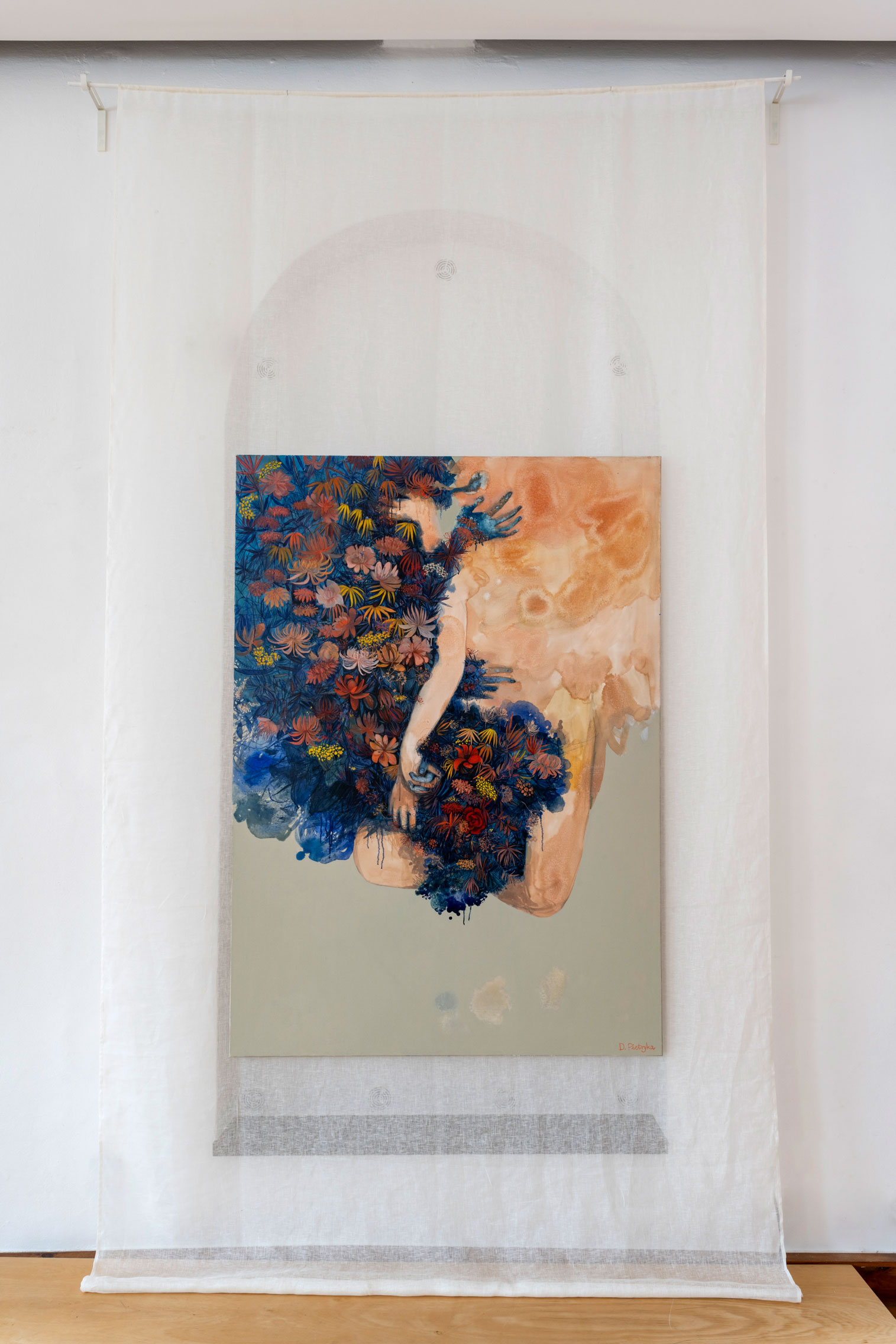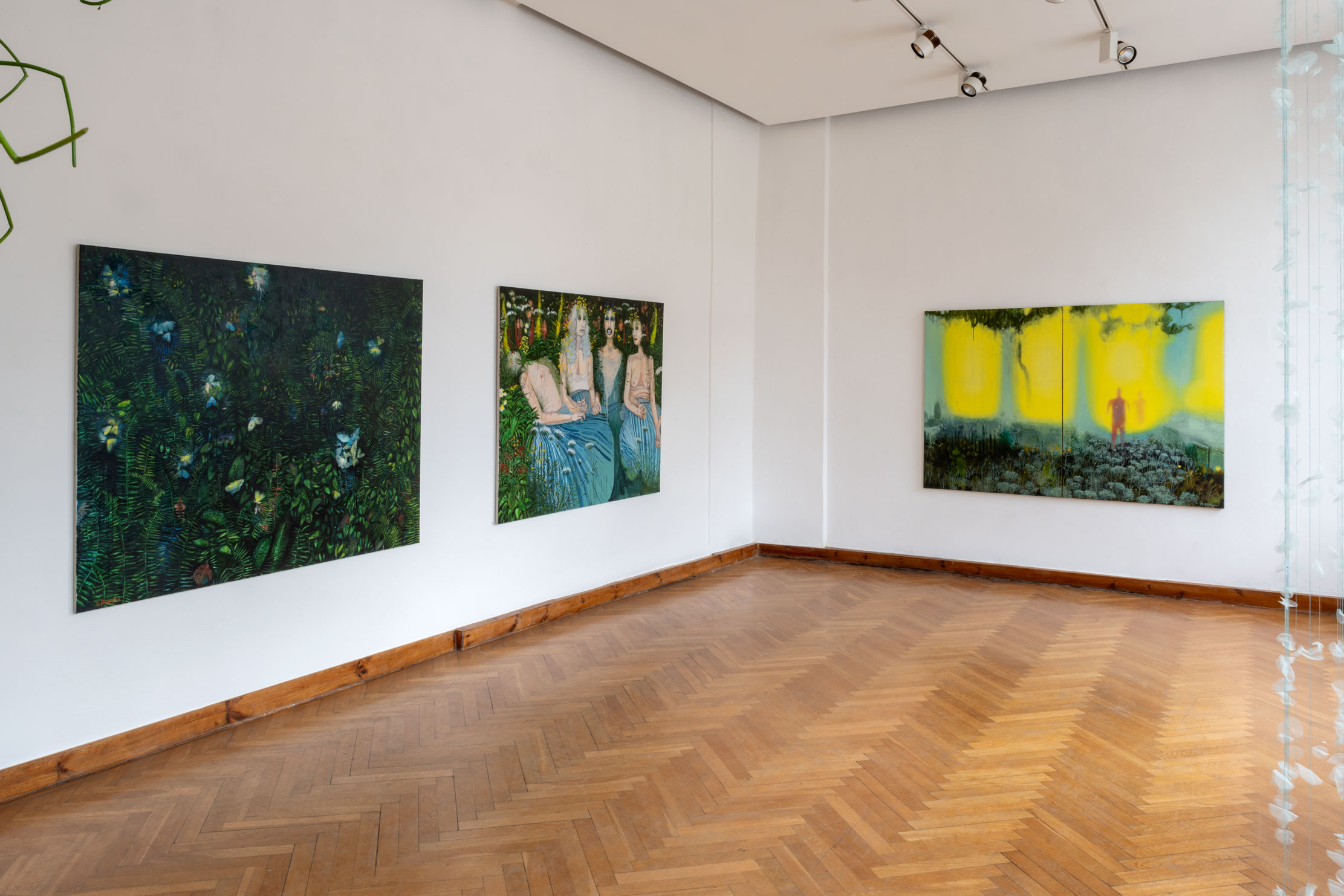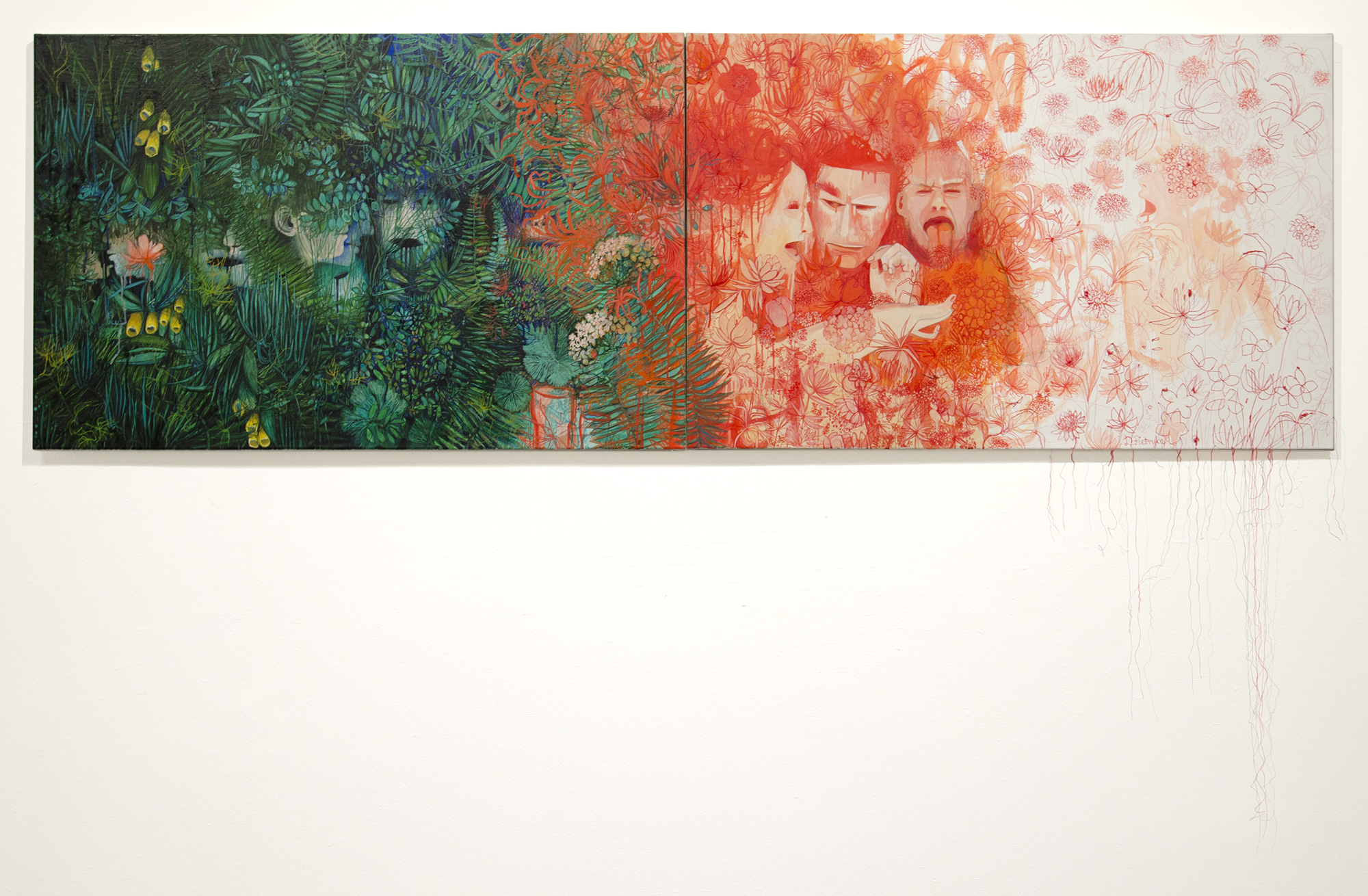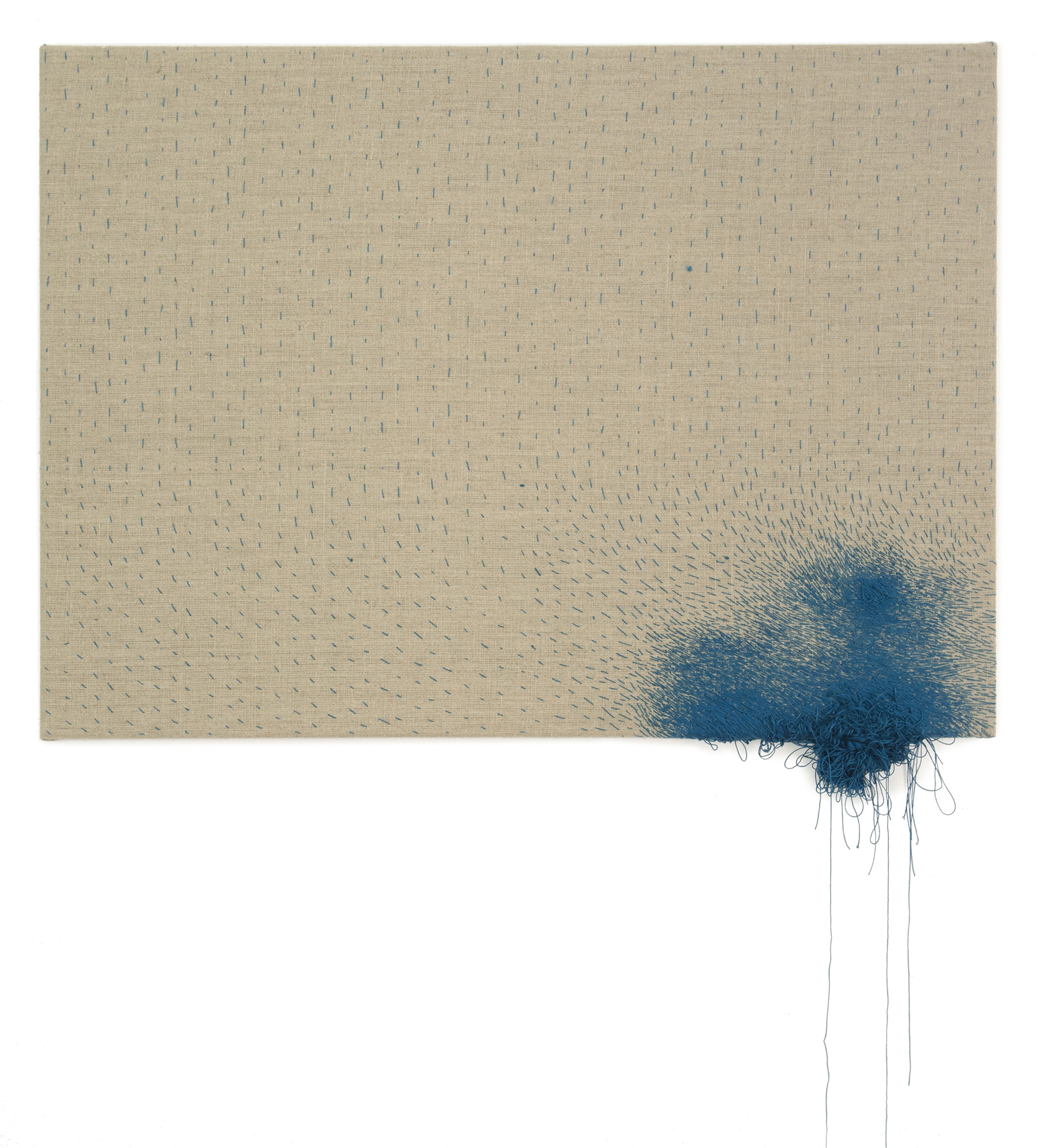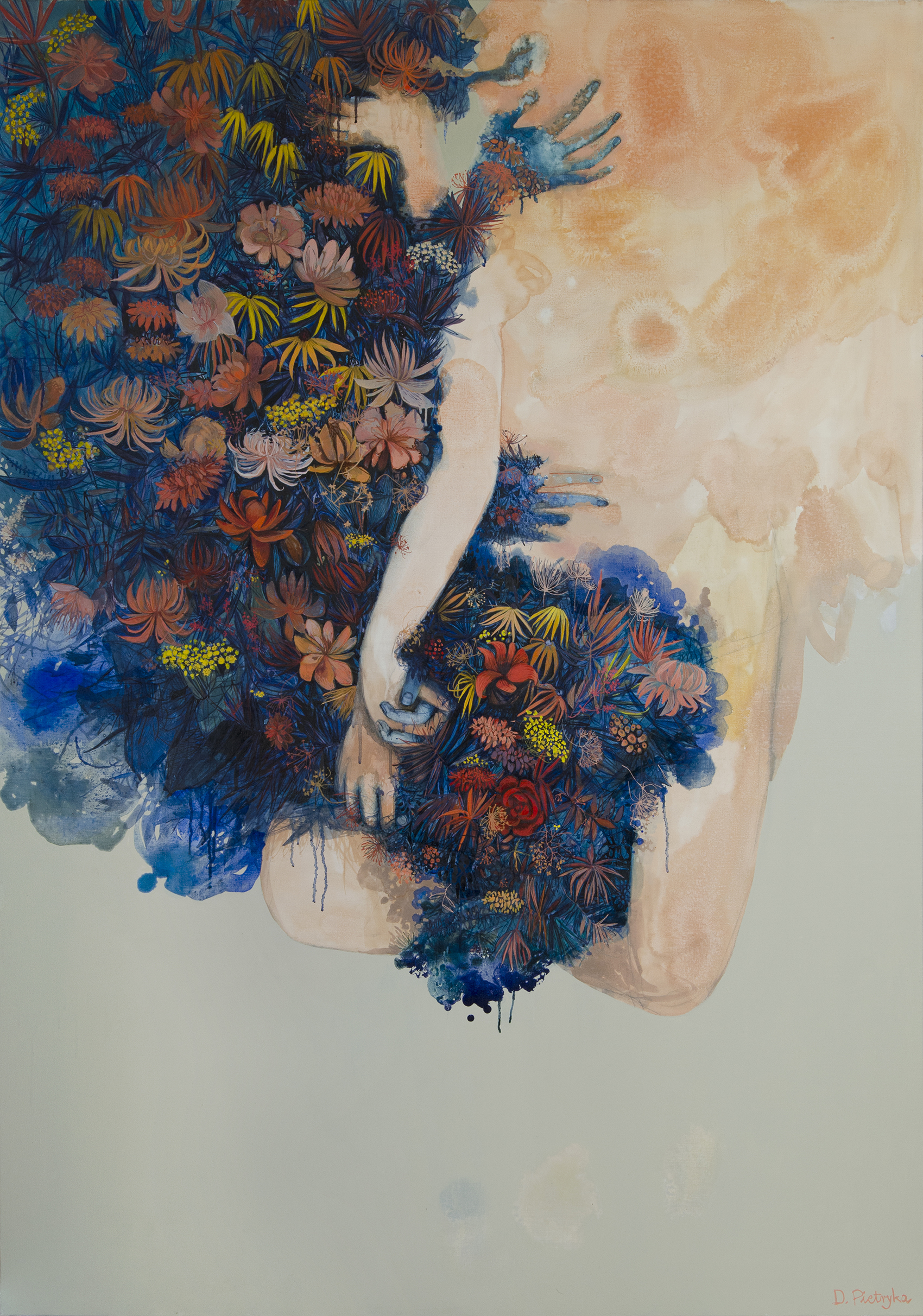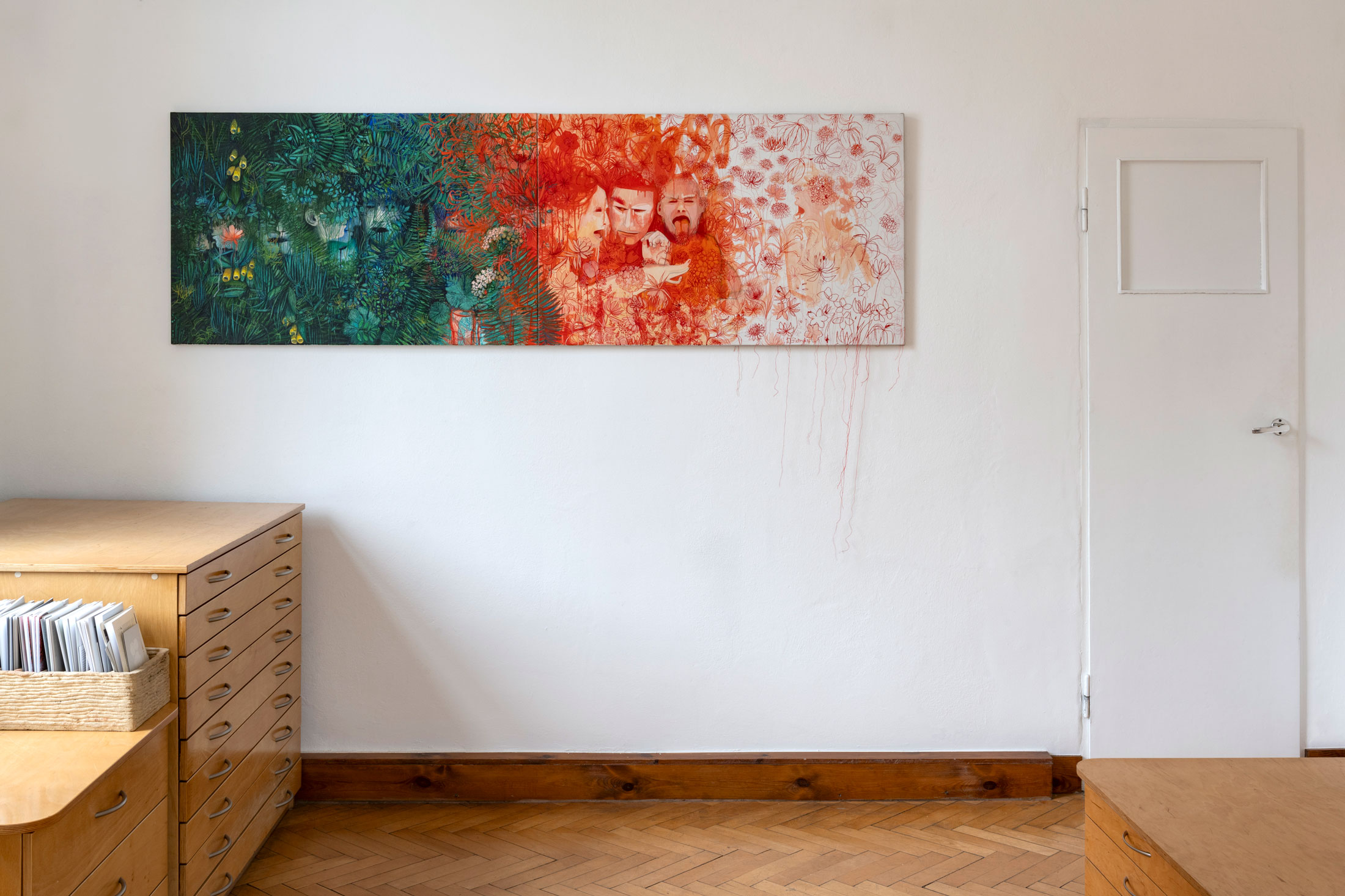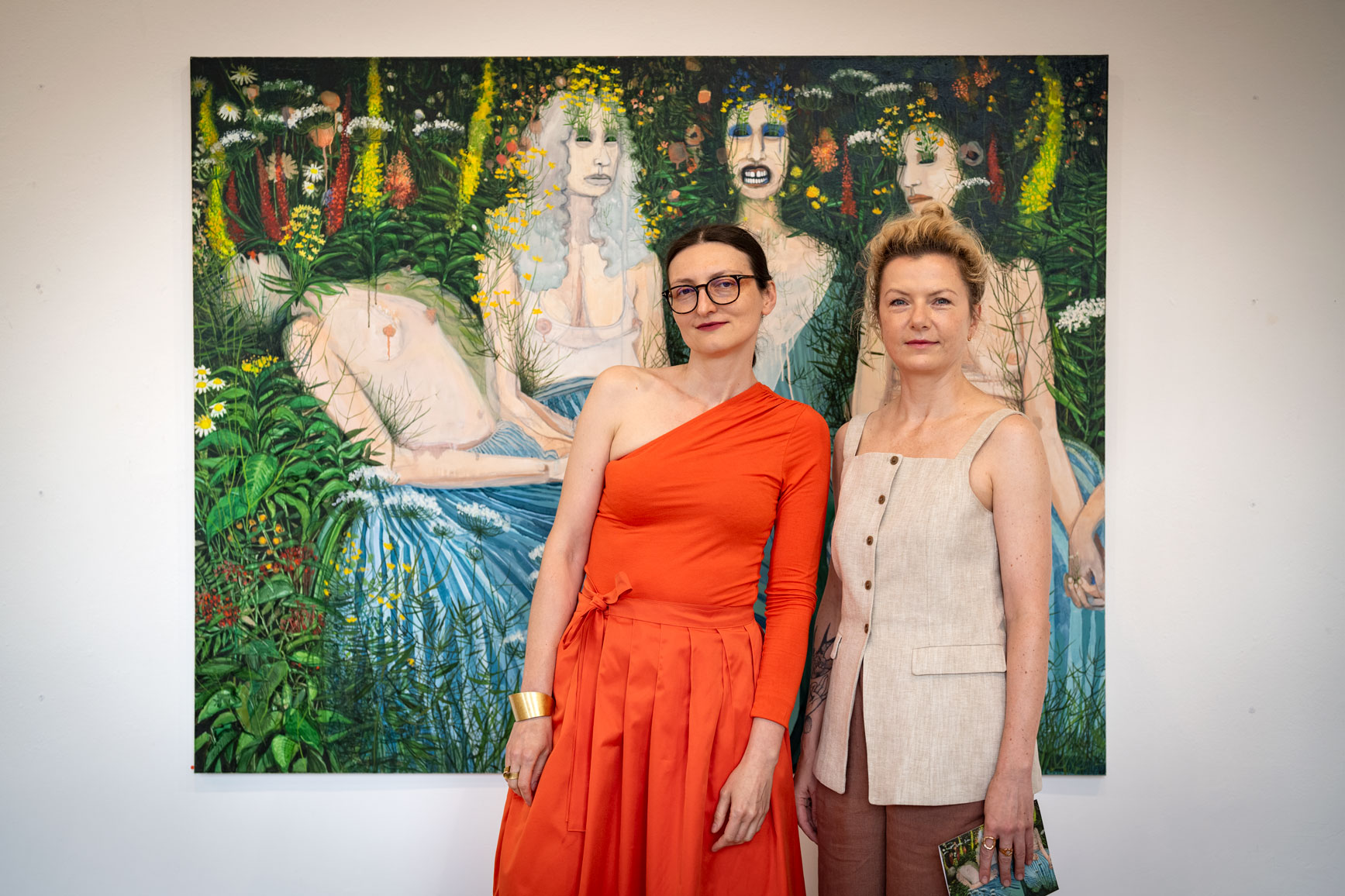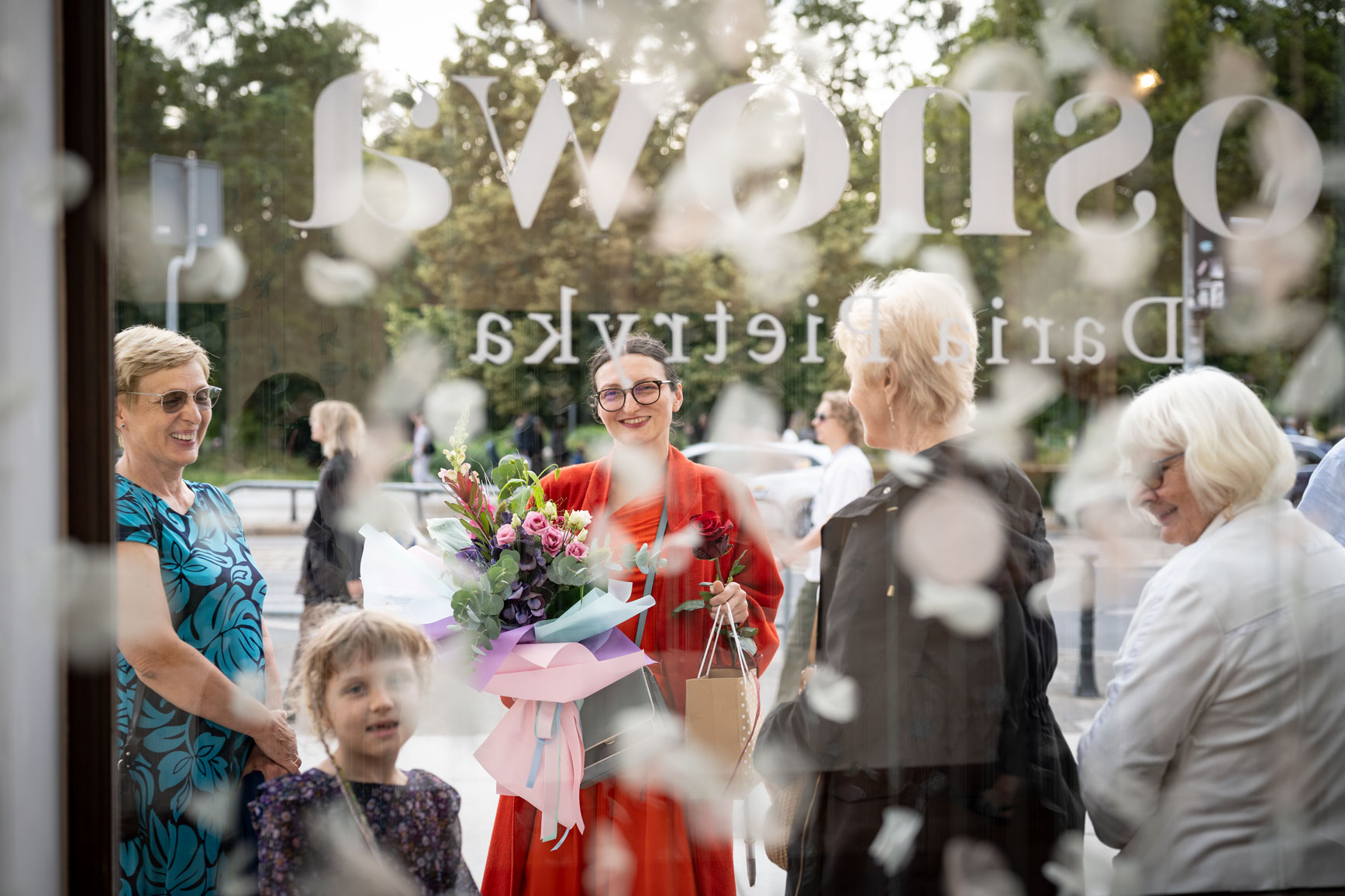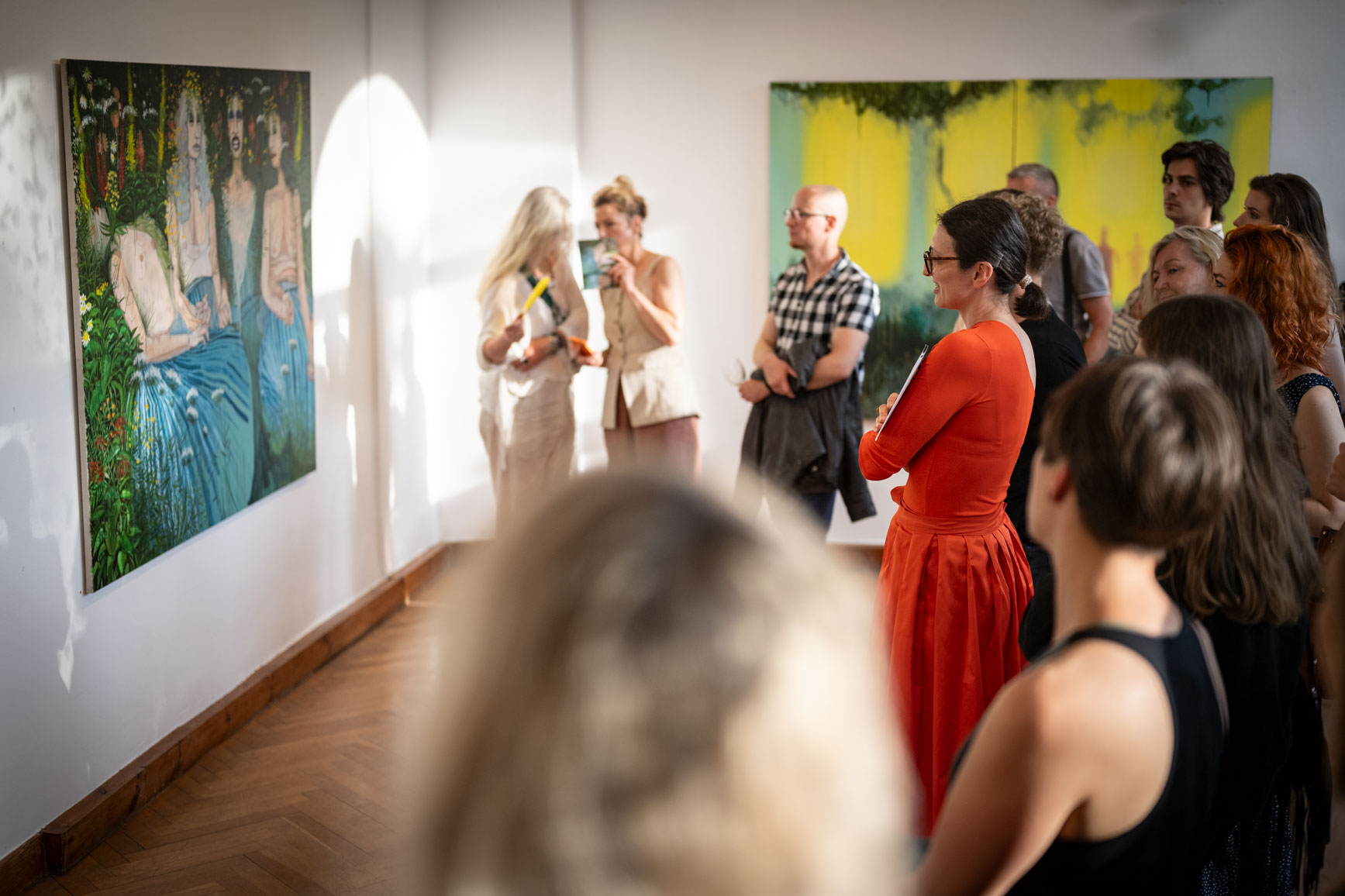On Friday, June 27th, 2025 at 7:00 PM, we invite you to the opening of the exhibition by Daria Pietryka, titled THREAD.
Daria Pietryka’s artistic practice stretches between the body and the cosmos, intimacy and universality, instinct and intellect. Her exhibitions from the years 2020–2025 – Between Us (Galeria M, Wrocław, 2020), My Name Is Chaos (Miejski Ośrodek Sztuki, Gorzów Wielkopolski, 2023), Conversations by the Cauldron (Galeria Sztuki in Legnica, 2023), and The Things That Have Been (Wozownia Art Gallery, Toruń, 2025) – form a coherent and multi-layered narrative. Each introduces a different tone, yet together they weave a dense fabric of meanings, showing how the artist expands the scope of her expression—from the experience of the female body, motherhood, and cultural roles to broader ecological and philosophical perspectives. In THREAD, these themes are brought back together and reworked into a new structure. The exhibition not only marks the end of a chapter but, above all, reveals the internal logic behind the artist’s work to date.
The title – THREAD – has its roots in the vocabulary of weaving, where threads form the essential structure of a textile. In a broader sense, it also refers to a guiding idea, a recurring motif, or the narrative spine of a work. Here, it becomes a metaphor for the artist’s creative process and the themes she explores.
All the key themes in Pietryka’s work return here. What binds them together is nature – seen as a breathing, complex organism, a bodily, pulsing presence to which humans are in constant relation. But nature is not just biological: it’s an existential and symbolic experience, a space where the cycle of life and death unfolds without pause. Pietryka’s works express a sharp awareness of how this relationship has been disrupted. She touches on species extinction, the loss of biodiversity, and social indifference toward these processes, focusing on that fragile moment between presence and disappearance.
At the same time, nature—especially the world of plants—serves as a way for Pietryka to explore other experiences, particularly those tied to womanhood. Themes of motherhood and female solidarity appear as distinct threads, yet they’re intertwined with organic matter, almost grown into it.
The female experience, in Pietryka’s case, is not only a theme but also a form of narration. She paints, embroiders, and constructs from the position of a woman who has lived life in many of its dimensions: as a daughter, mother, partner, artist, and citizen. Femininity is an ongoing process—a weaving together of roles, fears, expectations, and transformations. While her narratives are grounded in personal experience, they don’t take the form of autobiography. Their intimacy doesn’t isolate but draws the viewer into a shared experience—one that is not always comfortable and often confronts what has been repressed. Instead of presenting female everyday life as a set of private experiences, Pietryka emphasizes its systemic nature: she reveals mechanisms of oppression, inherited patterns, and forms of control embedded in familial, social, and institutional relationships. Her works pose questions about how to live and create in a world where the boundary between the personal and the political is increasingly blurred—between private care and collective responsibility.
Another central theme is connection—understood broadly: as a bond between people, a relationship with nature, and a sense of belonging to a community. But for Pietryka, connection is never idealized. Community isn’t portrayed as a safe haven, but rather as a space full of tension—where solidarity exists alongside exclusion. Her works often reveal ambivalence: closeness comes with fear, and care is tangled with control. In this view, relationships are always shifting—they require constant renegotiation of roles, boundaries, and language. Pietryka doesn’t seek neat representations of human ties; instead, she traces where they crack, unravel, or reach a breaking point. Her work questions the assumption that community is inherently good, revealing it instead as a fragile, complex structure.
Pietryka’s practice can be seen as a way of processing reality through the body, the senses, and emotion. It’s a kind of art rooted in experience—both individual and collective. Whether she’s addressing human relationships, inner chaos, feminine archetypes, or the ecological collapse, she always returns to the same deep concern: our need for closeness, and for a fuller understanding of what it means to be alive. Her narratives aren’t linear; they unfold in layers, shaped by tension and repetition. Her works often combine techniques and perspectives. The use of thread, fabric, dense textures, and color are never just aesthetic choices—they express a belief that the world around us is woven from countless events, emotions, and challenges. And that art is a way of exploring, feeling, and untangling them.
Though it marks the end of one chapter, Pietryka’s exhibition doesn’t offer a sense of closure. Instead, it leaves the viewer in a state of pause—an in-between space where something new is about to begin. Like in weaving, before a new pattern can emerge, the thread must be stretched and set with care. And that requires silence, focus, and conscious contact with what has been.
Daria Pietryka – painter, architect, interior designer, and set designer. A graduate of the Academy of Fine Arts in Wrocław, the School of Architecture at University College Dublin, and the Faculty of Architecture and Urban Planning at Wrocław University of Science and Technology. She works at the intersection of visual art and spatial design. More about Daria [here].
The text was written by Marta Dziedziniewicz, curator of the exhibition.
The exhibition will be on view from June 27 to July 12, 2025.

